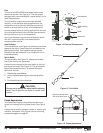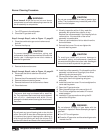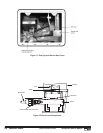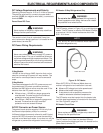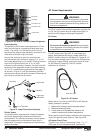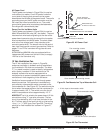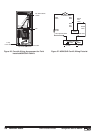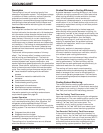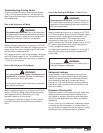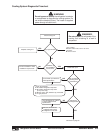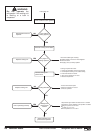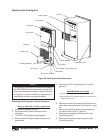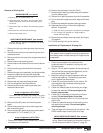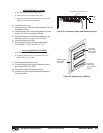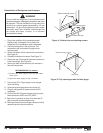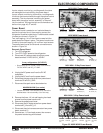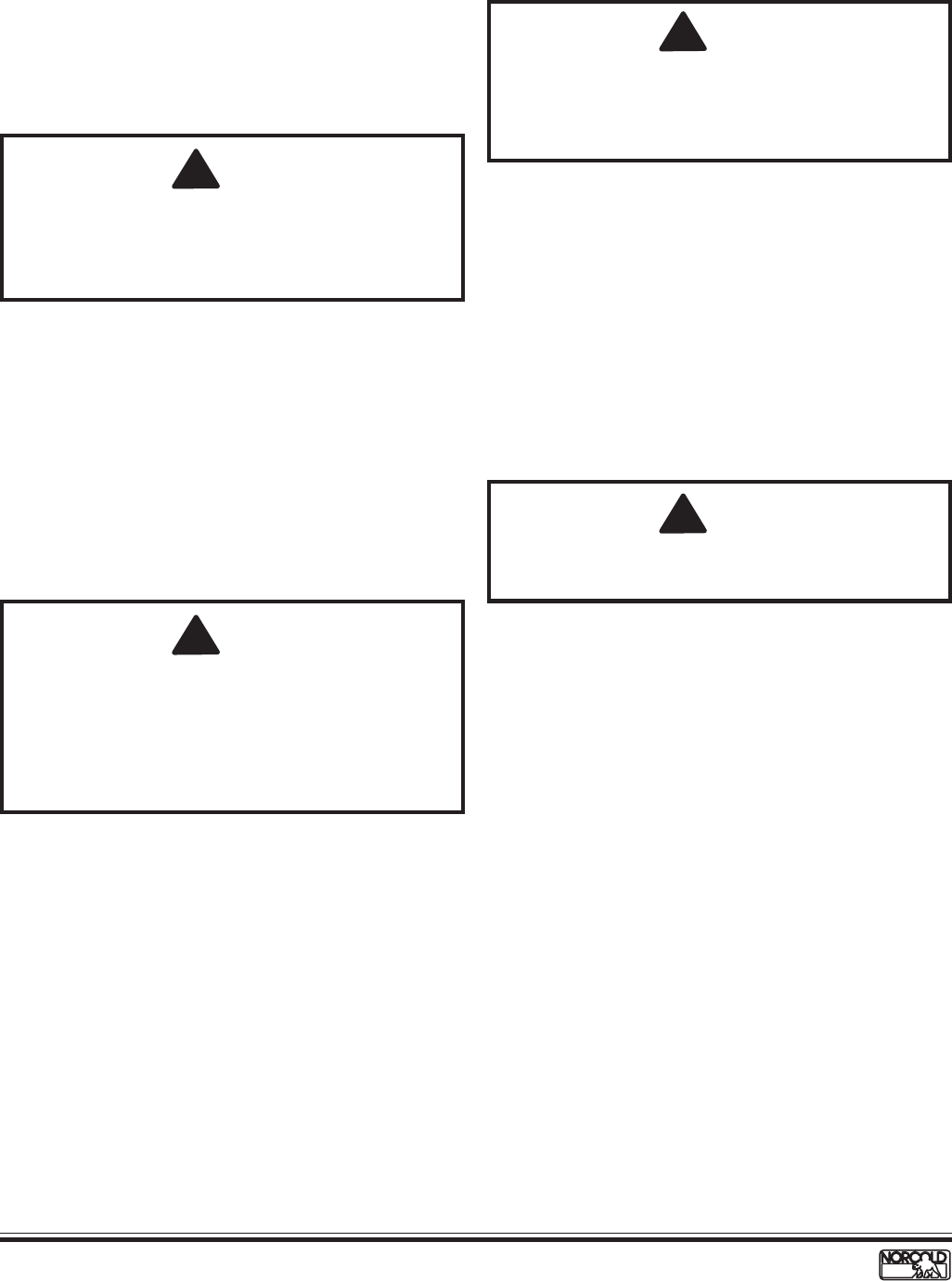
www.norcold.com/cda
38
Refrigerator Service ManualN6XX/N8XX Models
When troubleshooting poor or no cooling in AUTO DC
or DC-Manual Mode, always check DC voltage input to
the power board, voltage output to the heater, and
heater amperage draw. If DC voltage input to the
refrigerator is lower than 12 Vdc, the problem is
usually related to the DC power supply source. The RV
DC power supply source may not be supplying the
correct voltage to the power board.
The diagnostic flowcharts on pages 13, 14, and 15 of
this manual provide information to troubleshoot DC
power faults.
When troubleshooting poor or no cooling in AUTO LP
mode or LP-Manual Mode, always check the burner
flame appearance first. Most faults on LP gas
operation related to a "dirty burner."
The diagnostic flowchart on page 12 of this manual
provides information to troubleshoot the no flame
faults.
Refrigerant Leakage
Yellow powder or liquid deposits at the rear of the
refrigerator or ammonia smell inside the refrigerator
indicate refrigerant leakage. Exercise extreme care
when handling a leaking or a suspected leaking
cooling unit. The cooling system refrigerant solution
consists of water, ammonia, sodium hydroxide, and
sodium chromate.
Disposal of Cooling Unit
Dispose of cooling unit according to local, state, and
federal guidelines and regulations. Dispose of any
liquid waste or residue, according to pre-emergency
planning and all applicable local, state, and federal
regulations.
Do not, under any circumstances, release any waste
or residue directly into sewers, or surface waters. If
any liquid leaks or spills from the cooling unit, contact
the nearest environmental services for guidance.
!
WARNING:
Do not operate the refrigerator if the cooling unit is
leaking or leakage is suspected.
Poor or No Cooling on DC Mode – 3-Way Models
Troubleshooting Cooling Faults
A high percentage of cooling units returned labeled
“faulty” are fully operational units. The flowchart on
page 38 provides information to troubleshoot cooling
unit related faults.
When troubleshooting poor or no cooling in AUTO AC
or AC-Manual Mode, first check AC voltage input to the
power board, then check voltage output to the heater,
and the heater's amperage draw.
AC voltage problems, high or low voltages, caused by
the RV AC power supply circuit. To troubleshoot AC
faults, refer to the diagnostic flow charts on pages 16,
17, and 18 of this manual.
Poor or No Cooling on LP Gas Mode
Poor or No Cooling on AC Mode
!
WARNING:
LP gas (propane) is highly flammable and
explosive! Do not smoke, light fires, or create sparks
when working on the LP gas system.
Do not use an open flame to leak test any propane
gas system component.
!
WARNING:
Do not work on live circuits! Turn off and disconnect
AC power and DC power supplies before attempting
to remove, service, or repair any of the refrigerator's
electrical or electronic circuits or components.
!
WARNING:
Do not work on live circuits! Turn off AC power and
DC power before attempting to remove, service, or
repair any of the refrigerator's electrical or electronic
circuits or components.



